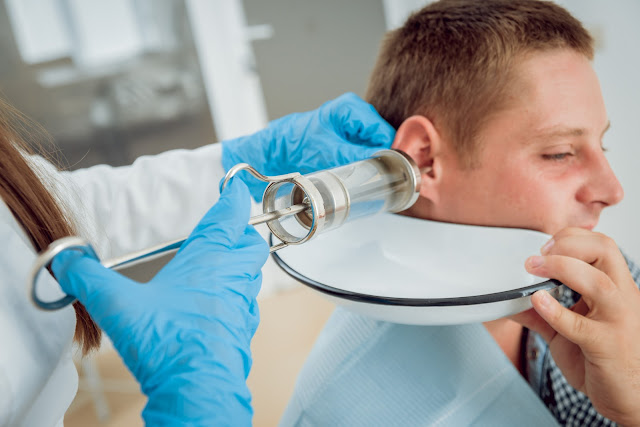The Painless Way to Clear Your Ears of Allergies
Having a steady build-up of earwax is normal. It is the body’s way of lubricating and protecting the inner ear from foreign particles and germs. This build-up of dust, hair, dead cells and natural wax forms a coat that moisturises the inner skin of the ear canal. Moreover, jaw movement while talking and chewing food naturally moves the wax along the ear canal. Thus build-up of earwax isn’t a severe problem.
However, the amount and type of earwax accumulated in the ear differ from one person to the next. For instance, allergies can cause the Eustachian tubes to swell and get clogged with excessive wax and fluid, thus resulting in dull hearing.
Ear Syringing at Home
Doctors
often recommend syringing as a last resort. Before trying this method, the
recommendation is to use olive oil drops. Ear drops can soften earwax, so the
wax build-up will gradually run smoothly and safely out of the canal. Below are
some safety tips:
- Warm some olive oil to room temperature.
- Lie on one side and drop four or five drops of olive oil into the affected ear using a dropper.
- Gently massage the ear entrance to facilitate oil flow into the ear canal.
- Soak for at least five minutes before draining.
- This procedure can be repeated twice daily for one to two weeks or until dulled hearing goes away.
If,
after two weeks, your hearing still does not improve, you may purchase a bulb
syringe from the pharmacy. It is a small rubber object shaped like a bulb that
fills with water for squirting gently into the ear. It is important to note
that wax must soften
for 14 days before syringing.
Also,
there is a 1 in 1000 chance of complications such as middle ear and external
canal infection, tinnitus or ringing in the ear, or a perforated eardrum.
Therefore, if you’re
not confident in doing the method at home on your own, visit a clinic that
specializes in ear syringing in Bromley.
Who Shouldn’t Try This Method
Syringing
and other self-care treatments at home are not advisable if you have:
- A perforated eardrum.
- Ear pain, buzzing, or deafness
- Smelly discharge or bleeding
- Ear infection
- Had ear surgery
- Dizziness




Comments
Post a Comment